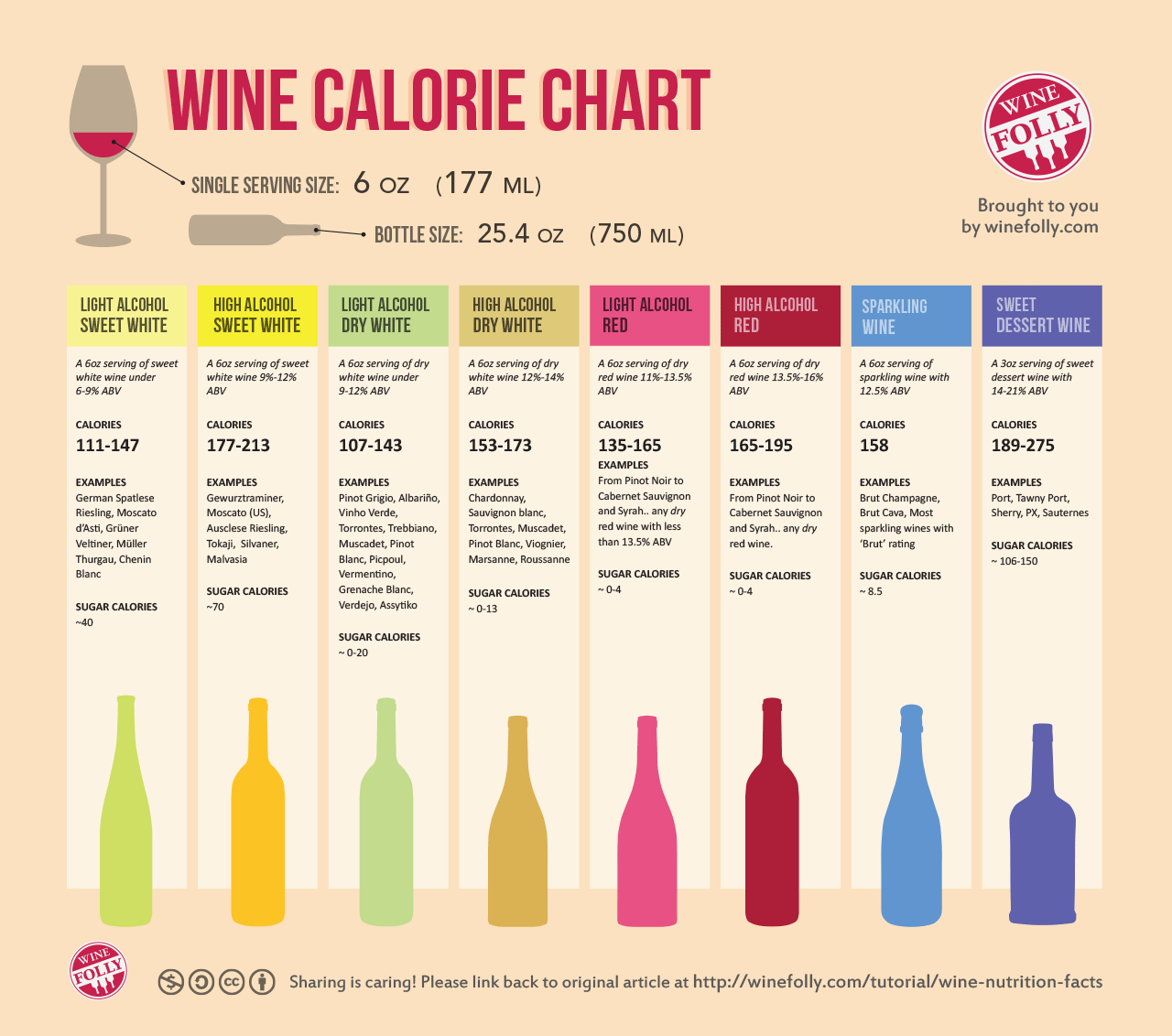Learn the nutrition facts of red wine, white wine, sparkling wine, and sweet wine. Calories differ from wine to wine, depending on their alcohol and sweetness level.
Q: Why Doesn’t Wine Have Nutrition Facts on the Label?
One of the reasons nutrition facts are not listed on wine labels is due to the stipulation that alcoholic beverages are not classified as nutritious. Of course, that doesn’t mean that is calorie free!
Wine Nutrition Facts
It’s time to understand what’s in your wine and how different types of wine affect calories and nutrients.

Why Aren’t Wine Nutrition Facts Standardized?
Since alcohol is the primary source of calories in wine, there isn’t a standard number. Fundamentally speaking, sweeter grapes ferment into higher alcohol wine. Besides carbs and calories, there are also nutrients in wine from grape skins. Red wines fall into this category and generally contain more minerals and antioxidants than most white wines.
What is the Primary Source of Calories in Wine?
Alcohol is the primary source of calories in wine. Thus, alcohol affects the calories in wine more than sugar. In some rare cases, a slightly sweet and low alcohol wine will actually have less calories than a dry, high alcohol wine. This is the case with Moscato d’Asti (with only about 5.5% ABV!).
Carbohydrates in Wine
Carbohydrates in wine come from sugar. Wine contains around 0 – 19 grams of carbs per serving depending on how sweet it is. Of course, most still, dry wines have much less. This estimate does not include flavored wines, which are much higher.
What Other Nutrients Can be Found in Wine?
- Fluoride
- 40% of recommended daily intake – Prevents tooth decay when used topically.
- Manganese
- 10% – Antioxidant beneficial to brain, liver and nervous system.
- Potassium
- 5% – Helps keep your heart beating.
- Iron
- 4% – Delivers oxygen to your body.
- Vitamin B6
- 4% – Helps access energy in your the body.
- Vitamin B2
- 3% – aka Riboflavin. Antioxidant that aids in oxygen delivery in the body.
- Phosphorus
- 3% – Strengthens bones, regulates hormones, and aids in digestion.
- Choline
- 2% – Helps in memory and liver function.
What About Sulfites in Wine?
Most wines contain anywhere from 20–150 mg/L of sulfites (sulphites). In the US, the legal limit for wine is 350 mg/L. By the way, sulfites might not be as bad as you think.
Should Wine Nutrition Facts be on Wine Labels?
In early February 2013, the health minister of UK announced that there is new discussion of the “possible inclusion of calorie content on labels” on alcoholic beverages. Allergy statements, such as sulfites, currently must be mentioned on most wine labels around the world.
Not much has been done since then.

Calorie Chart for Wine
Calories in wine by alcohol-level. Works for standard red and white wines.